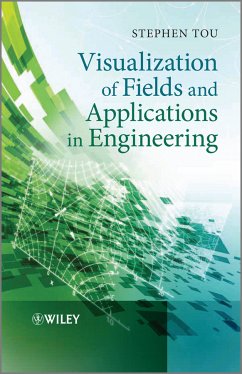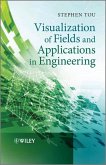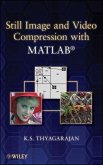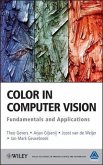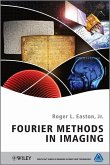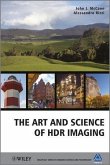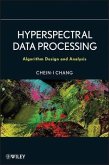Stephen Tou
Visualization of Fields and Applications in Engineering (eBook, ePUB)
103,99 €
103,99 €
inkl. MwSt.
Sofort per Download lieferbar

0 °P sammeln
103,99 €
Als Download kaufen

103,99 €
inkl. MwSt.
Sofort per Download lieferbar

0 °P sammeln
Jetzt verschenken
Alle Infos zum eBook verschenken
103,99 €
inkl. MwSt.
Sofort per Download lieferbar
Alle Infos zum eBook verschenken

0 °P sammeln
Stephen Tou
Visualization of Fields and Applications in Engineering (eBook, ePUB)
- Format: ePub
- Merkliste
- Auf die Merkliste
- Bewerten Bewerten
- Teilen
- Produkt teilen
- Produkterinnerung
- Produkterinnerung

Bitte loggen Sie sich zunächst in Ihr Kundenkonto ein oder registrieren Sie sich bei
bücher.de, um das eBook-Abo tolino select nutzen zu können.
Hier können Sie sich einloggen
Hier können Sie sich einloggen
Sie sind bereits eingeloggt. Klicken Sie auf 2. tolino select Abo, um fortzufahren.

Bitte loggen Sie sich zunächst in Ihr Kundenkonto ein oder registrieren Sie sich bei bücher.de, um das eBook-Abo tolino select nutzen zu können.
Driven by advances in computer technology, engineering analysis has developed rapidly and extensively in recent times; Visualization of Fields and Applications in Engineering presents the basic techniques for tensor field visualization and mapping of engineering data. Focusing on the fundamental aspects of post processing databases and applications outputs, the author explores existing theories and their integration in tensor field visualization and analysis. The subject covers fundamental theories through to integrated, multi-disciplinary technologies with practical applications in…mehr
- Geräte: eReader
- mit Kopierschutz
- eBook Hilfe
- Größe: 7.35MB
Andere Kunden interessierten sich auch für
![Visualization of Fields and Applications in Engineering (eBook, PDF) Visualization of Fields and Applications in Engineering (eBook, PDF)]() Stephen TouVisualization of Fields and Applications in Engineering (eBook, PDF)103,99 €
Stephen TouVisualization of Fields and Applications in Engineering (eBook, PDF)103,99 €![Still Image and Video Compression with MATLAB (eBook, ePUB) Still Image and Video Compression with MATLAB (eBook, ePUB)]() K. S. ThyagarajanStill Image and Video Compression with MATLAB (eBook, ePUB)116,99 €
K. S. ThyagarajanStill Image and Video Compression with MATLAB (eBook, ePUB)116,99 €![Color in Computer Vision (eBook, ePUB) Color in Computer Vision (eBook, ePUB)]() Theo GeversColor in Computer Vision (eBook, ePUB)107,99 €
Theo GeversColor in Computer Vision (eBook, ePUB)107,99 €![Fourier Methods in Imaging (eBook, ePUB) Fourier Methods in Imaging (eBook, ePUB)]() Roger L. Easton Jr.Fourier Methods in Imaging (eBook, ePUB)138,99 €
Roger L. Easton Jr.Fourier Methods in Imaging (eBook, ePUB)138,99 €![The Art and Science of HDR Imaging (eBook, ePUB) The Art and Science of HDR Imaging (eBook, ePUB)]() John J. MccannThe Art and Science of HDR Imaging (eBook, ePUB)109,99 €
John J. MccannThe Art and Science of HDR Imaging (eBook, ePUB)109,99 €![Meta-Algorithmics (eBook, ePUB) Meta-Algorithmics (eBook, ePUB)]() Steven J. SimskeMeta-Algorithmics (eBook, ePUB)88,99 €
Steven J. SimskeMeta-Algorithmics (eBook, ePUB)88,99 €![Hyperspectral Data Processing (eBook, ePUB) Hyperspectral Data Processing (eBook, ePUB)]() Chein-I ChangHyperspectral Data Processing (eBook, ePUB)186,99 €
Chein-I ChangHyperspectral Data Processing (eBook, ePUB)186,99 €-
-
-
Driven by advances in computer technology, engineering analysis has developed rapidly and extensively in recent times; Visualization of Fields and Applications in Engineering presents the basic techniques for tensor field visualization and mapping of engineering data. Focusing on the fundamental aspects of post processing databases and applications outputs, the author explores existing theories and their integration in tensor field visualization and analysis. The subject covers fundamental theories through to integrated, multi-disciplinary technologies with practical applications in engineering, computer /general sciences. Visualization of Fields and Applications in Engineering is suitable for academic use and to serve as a source of reference. It will appeal to those who work in the engineering and science professions or in pursuit of academic training/ research. * Offers a unique engineering approach to basic techniques for tensor field visualization and mapping * Collates together material currently disseminated throughout the literature into one accessible point of reference * Presents examples with applications beyond and across many disciplines.
Dieser Download kann aus rechtlichen Gründen nur mit Rechnungsadresse in D ausgeliefert werden.
Produktdetails
- Produktdetails
- Verlag: John Wiley & Sons
- Erscheinungstermin: 22. April 2011
- Englisch
- ISBN-13: 9780470978467
- Artikelnr.: 37301249
- Verlag: John Wiley & Sons
- Erscheinungstermin: 22. April 2011
- Englisch
- ISBN-13: 9780470978467
- Artikelnr.: 37301249
- Herstellerkennzeichnung Die Herstellerinformationen sind derzeit nicht verfügbar.
Stephen Tou, National University, San Diego, USA
Dr Stephen Tou joined the National University in San Diego, USA as an Adjunct Professor in 2006, having previously been with the Department of Mechanical and Aerospace Engineering at Nanyang Technological University, Singapore as an associate professor for 20 years. He teaches a graduate course in transport phenomena and undergraduate courses in fluid mechanics, energy systems & heat transfer, environmental fluid mechanics, energy conversion systems and machinery, and engineering mathematics. He has published circa 60 refereed journal papers and 20 conference papers.
Dr Stephen Tou joined the National University in San Diego, USA as an Adjunct Professor in 2006, having previously been with the Department of Mechanical and Aerospace Engineering at Nanyang Technological University, Singapore as an associate professor for 20 years. He teaches a graduate course in transport phenomena and undergraduate courses in fluid mechanics, energy systems & heat transfer, environmental fluid mechanics, energy conversion systems and machinery, and engineering mathematics. He has published circa 60 refereed journal papers and 20 conference papers.
Preface ix 1 Introduction 1 1.1 A General View 1 1.2 Historical Development and Progress in Visual Science 3 1.3 Scientific Visualization Philosophy, Techniques and Challenges 7 2 Field Descriptions and Kinematics 11 2.1 Lagrangian/Eulerian Description and Transformation 11 2.2 Curvilinear Coordinates 15 2.2.1 Polar Coordinate 24 2.2.2 Streamline (Flux Line) Coordinates 29 2.2.3 Potential-Stream Function Coordinates 43 2.3 Field Kinematics and Visual Attributes 49 2.3.1 Field Line Trajectory 49 2.3.2 Field Line Integral Curves 50 2.3.3 Field Lines, Material Lines and Path Lines 54 2.3.4 Streamlines (Flux Lines) 56 3 Field Model, Representation and Visualization 63 3.1 Field Models and Concepts 63 3.2 Scalar Fields and Representation 65 3.3 Vector Fields and Representation 68 3.4 Vector Icons and Classifications 69 3.4.1 Classification Based on Domain Configurations 70 3.4.2 Classification Based on Information Levels 70 3.4.3 Classification Based on Topological Skeleton 71 3.5 Scalar Potential 71 3.6 Vector Potential 74 3.7 Vector Field Specification 77 3.7.1 Helmholtz's Theorem 77 3.8 Tensor Contraction and Transport Process Visualization 79 3.8.1 Mechanical Energy Function and Heatfunction 80 3.8.2 Strain Energy Trajectory and Strain Function 84 3.9 Multiple Fields 85 4 Complex Analysis and Complex Potentials 97 4.1 Complex Variables/Functions and Applications 97 4.2 Complex Analysis and Cauchy-Riemann Equation 100 4.3 Differentiation of Complex Function 101 4.4 Integration of Complex Functions 104 4.5 Visualization of Complex Potentials 107 4.5.1 Trajectory Method 107 4.5.2 Method of Curvilinear Squares 108 4.5.3 Transfer Characteristics and Field Property Evaluation 111 4.6 Example 4.1a Visualization of Heat and Fluid Transport in a Corner 114 5 Field Mapping and Applications 127 5.1 Introduction 127 5.2 Mapping of Euclidean Geometry 129 5.2.1 Congruent Mapping 129 5.2.2 Similitude Mapping 131 5.2.3 Affine Mapping 132 5.3 Inversion Mapping 133 5.3.1 Circle Inversion 134 5.4 Mapping with Complex Functions 135 5.5 Conformal Mapping and Applications 137 5.6 Hodograph Method and Mapping 147 5.6.1 Conjugate Hodograph 148 5.6.2 Hodograph 149 5.7 Hodograph Representations and Applications 149 5.7.1 Straight Boundaries 156 5.7.2 Free Surface 158 5.7.3 Special Field Patterns 160 5.7.4 Projectile Trajectory in Constant Force Fields 163 5.7.5 Motion Trajectory in Central Force Fields 169 5.7.6 Trajectory of Charged Particles in Uniform Magnetic Fields 179 5.8 Example 4.1b Mapping of Field Patterns and Image Warping 183 6 Tensor Representation, Contraction and Visualization 199 6.1 Introduction 199 6.2 Development of Tensor Visualization Techniques 200 6.2.1 Mohr's Circle 200 6.2.2 Tensor Field Line Trajectories (Lines of Principal Stress) 200 6.2.3 Isochromatics 201 6.2.4 Isoclines 201 6.2.5 Stress Trajectories 201 6.2.6 Slip Lines 201 6.2.7 Isopachs 201 6.3 Tensor Description and Representation 201 6.3.1 Tensor Icons and Classification 204 6.4 Tensor Decomposition and Tensor Rank Reduction 204 6.4.1 Strain Tensor and Stress Tensor 206 6.4.2 Rotation Tensor 207 6.4.3 Rate of Strain Tensor and Viscous Stress Tensor 208 6.4.4 Vorticity Tensor 210 6.4.5 Tensor Contractions: Tensor Vector on a Reference Plane 213 6.4.6 Tensor Contractions: Tensor Vector at a Point 214 6.5 Visualization of Symmetric Tensors 214 6.5.1 Tensor Invariants 214 6.5.2 Tensor Transformation 217 6.5.3 Principal States and Eigenanalysis 217 6.5.4 Hybrid Method of Tensor Visualization 227 6.6 Visualization of Antisymmetric Tensors 228 6.6.1 Vorticity Concepts and Dynamics 228 6.6.2 Forced Vortex 232 6.6.3 Free Vortex 237 6.6.4 Vortices Transport and Vorticity Function 240 6.7 Example: 4.1c Convective Momentum Flux Tensor Visualization 242 7 Critical Point Topology, Classification and Visualization 249 7.1 Introduction 249 7.2 Complex Analysis of Critical Point 251 7.3 Critical Point Theory and Classification 257 7.3.1 Symmetric Tensor: [
V] = [
V]T; Im1 = Im2 = 0 261 7.3.2 Antisymmetric Tensor:
ii = 0, i = j;
ij =
ji, i
j 262 7.3.3 Asymmetric Tensor 262 7.4 Example 4.1d Critical Point Topology 263 7.5 Singular Point Visualization and Mapping 265 7.6 Example 7.1 Mapping of a Point Source 266 8 Engineering Application Examples 273 8.1 Example 8.1: Torsion of a Square Beam 273 8.2 Example 8.2: Bending of a Cantilever Beam Subject to a Point Load 302 8.3 Example 8.3: Squeezing Flow and Vorticity Transport 323 8.4 Example 8.4: Groundwater Flows in an Anisotropic Porous Medium 345 References 365 Index 369
V] = [
V]T; Im1 = Im2 = 0 261 7.3.2 Antisymmetric Tensor:
ii = 0, i = j;
ij =
ji, i
j 262 7.3.3 Asymmetric Tensor 262 7.4 Example 4.1d Critical Point Topology 263 7.5 Singular Point Visualization and Mapping 265 7.6 Example 7.1 Mapping of a Point Source 266 8 Engineering Application Examples 273 8.1 Example 8.1: Torsion of a Square Beam 273 8.2 Example 8.2: Bending of a Cantilever Beam Subject to a Point Load 302 8.3 Example 8.3: Squeezing Flow and Vorticity Transport 323 8.4 Example 8.4: Groundwater Flows in an Anisotropic Porous Medium 345 References 365 Index 369
Preface ix 1 Introduction 1 1.1 A General View 1 1.2 Historical Development and Progress in Visual Science 3 1.3 Scientific Visualization Philosophy, Techniques and Challenges 7 2 Field Descriptions and Kinematics 11 2.1 Lagrangian/Eulerian Description and Transformation 11 2.2 Curvilinear Coordinates 15 2.2.1 Polar Coordinate 24 2.2.2 Streamline (Flux Line) Coordinates 29 2.2.3 Potential-Stream Function Coordinates 43 2.3 Field Kinematics and Visual Attributes 49 2.3.1 Field Line Trajectory 49 2.3.2 Field Line Integral Curves 50 2.3.3 Field Lines, Material Lines and Path Lines 54 2.3.4 Streamlines (Flux Lines) 56 3 Field Model, Representation and Visualization 63 3.1 Field Models and Concepts 63 3.2 Scalar Fields and Representation 65 3.3 Vector Fields and Representation 68 3.4 Vector Icons and Classifications 69 3.4.1 Classification Based on Domain Configurations 70 3.4.2 Classification Based on Information Levels 70 3.4.3 Classification Based on Topological Skeleton 71 3.5 Scalar Potential 71 3.6 Vector Potential 74 3.7 Vector Field Specification 77 3.7.1 Helmholtz's Theorem 77 3.8 Tensor Contraction and Transport Process Visualization 79 3.8.1 Mechanical Energy Function and Heatfunction 80 3.8.2 Strain Energy Trajectory and Strain Function 84 3.9 Multiple Fields 85 4 Complex Analysis and Complex Potentials 97 4.1 Complex Variables/Functions and Applications 97 4.2 Complex Analysis and Cauchy-Riemann Equation 100 4.3 Differentiation of Complex Function 101 4.4 Integration of Complex Functions 104 4.5 Visualization of Complex Potentials 107 4.5.1 Trajectory Method 107 4.5.2 Method of Curvilinear Squares 108 4.5.3 Transfer Characteristics and Field Property Evaluation 111 4.6 Example 4.1a Visualization of Heat and Fluid Transport in a Corner 114 5 Field Mapping and Applications 127 5.1 Introduction 127 5.2 Mapping of Euclidean Geometry 129 5.2.1 Congruent Mapping 129 5.2.2 Similitude Mapping 131 5.2.3 Affine Mapping 132 5.3 Inversion Mapping 133 5.3.1 Circle Inversion 134 5.4 Mapping with Complex Functions 135 5.5 Conformal Mapping and Applications 137 5.6 Hodograph Method and Mapping 147 5.6.1 Conjugate Hodograph 148 5.6.2 Hodograph 149 5.7 Hodograph Representations and Applications 149 5.7.1 Straight Boundaries 156 5.7.2 Free Surface 158 5.7.3 Special Field Patterns 160 5.7.4 Projectile Trajectory in Constant Force Fields 163 5.7.5 Motion Trajectory in Central Force Fields 169 5.7.6 Trajectory of Charged Particles in Uniform Magnetic Fields 179 5.8 Example 4.1b Mapping of Field Patterns and Image Warping 183 6 Tensor Representation, Contraction and Visualization 199 6.1 Introduction 199 6.2 Development of Tensor Visualization Techniques 200 6.2.1 Mohr's Circle 200 6.2.2 Tensor Field Line Trajectories (Lines of Principal Stress) 200 6.2.3 Isochromatics 201 6.2.4 Isoclines 201 6.2.5 Stress Trajectories 201 6.2.6 Slip Lines 201 6.2.7 Isopachs 201 6.3 Tensor Description and Representation 201 6.3.1 Tensor Icons and Classification 204 6.4 Tensor Decomposition and Tensor Rank Reduction 204 6.4.1 Strain Tensor and Stress Tensor 206 6.4.2 Rotation Tensor 207 6.4.3 Rate of Strain Tensor and Viscous Stress Tensor 208 6.4.4 Vorticity Tensor 210 6.4.5 Tensor Contractions: Tensor Vector on a Reference Plane 213 6.4.6 Tensor Contractions: Tensor Vector at a Point 214 6.5 Visualization of Symmetric Tensors 214 6.5.1 Tensor Invariants 214 6.5.2 Tensor Transformation 217 6.5.3 Principal States and Eigenanalysis 217 6.5.4 Hybrid Method of Tensor Visualization 227 6.6 Visualization of Antisymmetric Tensors 228 6.6.1 Vorticity Concepts and Dynamics 228 6.6.2 Forced Vortex 232 6.6.3 Free Vortex 237 6.6.4 Vortices Transport and Vorticity Function 240 6.7 Example: 4.1c Convective Momentum Flux Tensor Visualization 242 7 Critical Point Topology, Classification and Visualization 249 7.1 Introduction 249 7.2 Complex Analysis of Critical Point 251 7.3 Critical Point Theory and Classification 257 7.3.1 Symmetric Tensor: [
V] = [
V]T; Im1 = Im2 = 0 261 7.3.2 Antisymmetric Tensor:
ii = 0, i = j;
ij =
ji, i
j 262 7.3.3 Asymmetric Tensor 262 7.4 Example 4.1d Critical Point Topology 263 7.5 Singular Point Visualization and Mapping 265 7.6 Example 7.1 Mapping of a Point Source 266 8 Engineering Application Examples 273 8.1 Example 8.1: Torsion of a Square Beam 273 8.2 Example 8.2: Bending of a Cantilever Beam Subject to a Point Load 302 8.3 Example 8.3: Squeezing Flow and Vorticity Transport 323 8.4 Example 8.4: Groundwater Flows in an Anisotropic Porous Medium 345 References 365 Index 369
V] = [
V]T; Im1 = Im2 = 0 261 7.3.2 Antisymmetric Tensor:
ii = 0, i = j;
ij =
ji, i
j 262 7.3.3 Asymmetric Tensor 262 7.4 Example 4.1d Critical Point Topology 263 7.5 Singular Point Visualization and Mapping 265 7.6 Example 7.1 Mapping of a Point Source 266 8 Engineering Application Examples 273 8.1 Example 8.1: Torsion of a Square Beam 273 8.2 Example 8.2: Bending of a Cantilever Beam Subject to a Point Load 302 8.3 Example 8.3: Squeezing Flow and Vorticity Transport 323 8.4 Example 8.4: Groundwater Flows in an Anisotropic Porous Medium 345 References 365 Index 369
